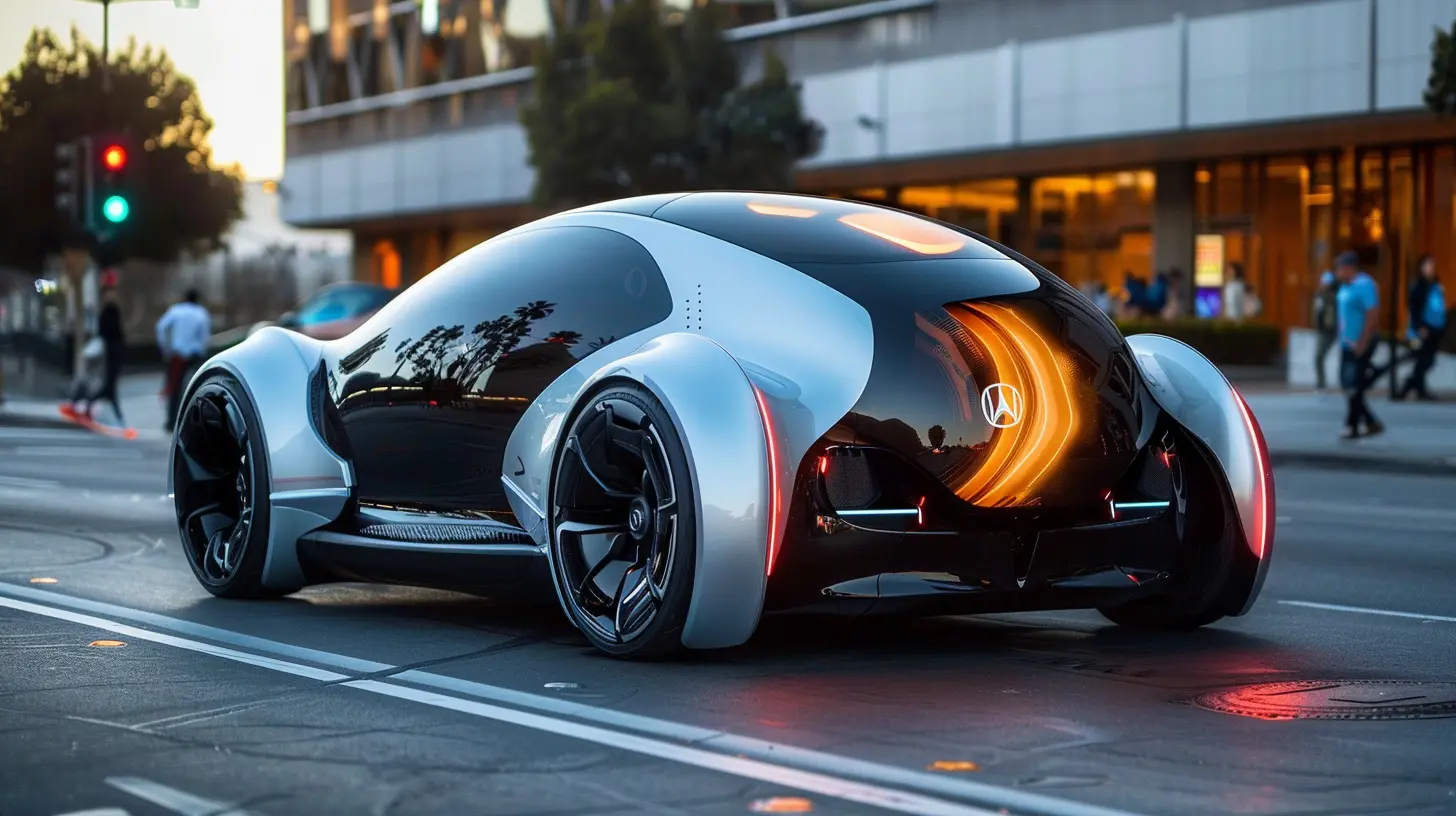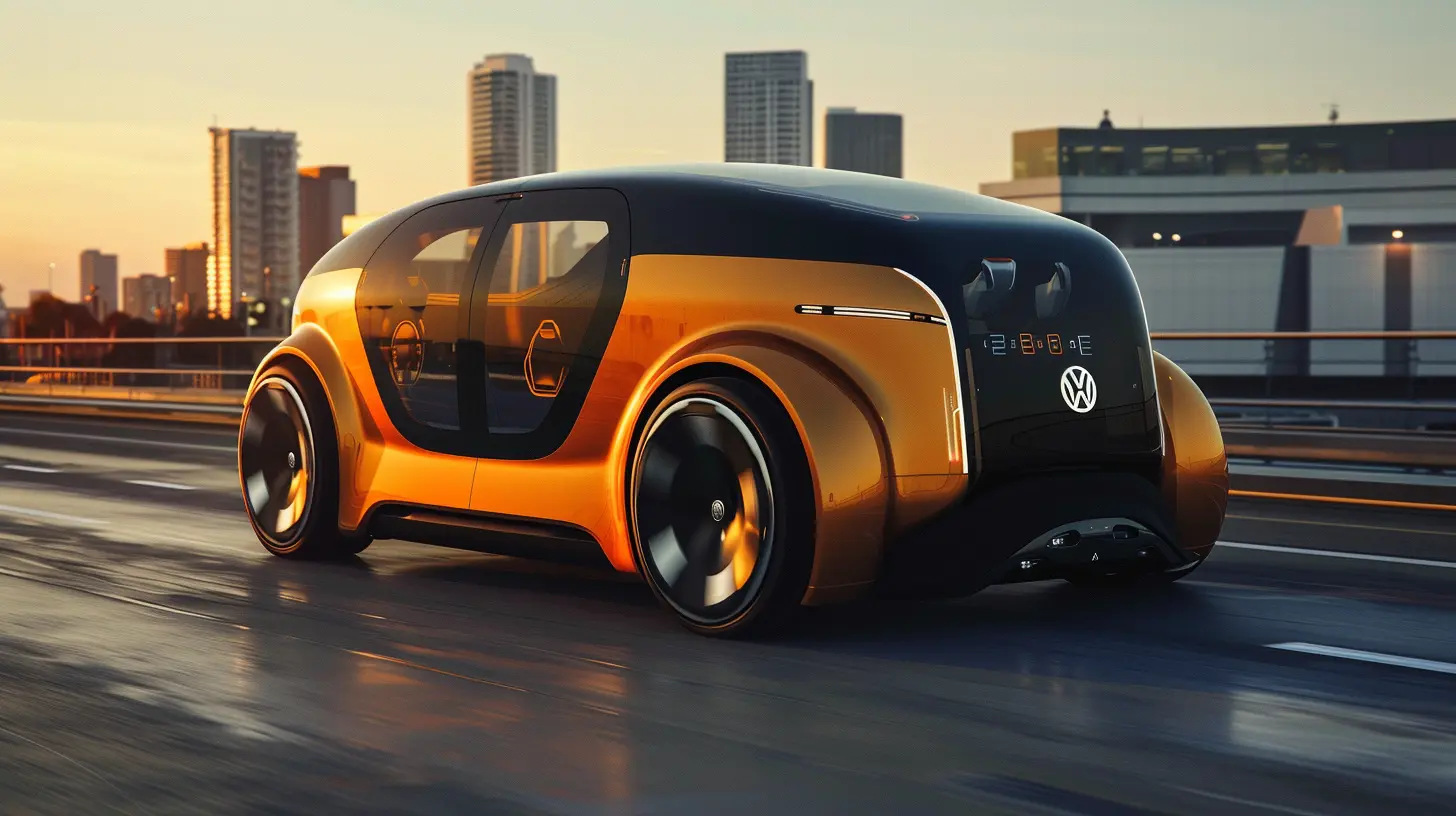The Future of Autonomous Car Regulations: What Needs to Change?
27 September 2025
The autonomous car revolution is already in motion. From slick Teslas cruising on Autopilot to Waymo's robotaxis zipping around city streets, the dream of self-driving vehicles is no longer a far-off sci-fi fantasy. But if we're honest, while the tech is accelerating like a sports car, the rules and regulations are crawling along like a scooter with a flat tire.
So, what needs to change for autonomous vehicles (AVs) to safely, successfully, and legally become just another part of daily life? Buckle up, because we're diving into the road ahead—and the bumps we need to pave over.
Why Regulations Matter More Than Ever
Imagine hopping into a car without a steering wheel, no driver, and just a screen greeting you with your destination. Sounds cool, right? But what happens if something goes wrong? Who’s responsible? The carmaker? The software developer? You?That’s why autonomous vehicle regulations are so important—they’re the blueprint for safety, accountability, and public trust.
Without clear, consistent laws, it's like asking drivers to obey traffic signs that change every 10 feet. Confusing, chaotic, and downright dangerous.
The Current State of AV Regulations: A Patchwork Mess
Right now, autonomous driving laws are all over the place. In the U.S., each state can set its own rules. That means a self-driving car might be legal in Arizona, but illegal across the state line in Nevada. Not exactly ideal for a vehicle that's supposed to be smart enough to drive itself.Globally, it's even messier. Europe is cautiously moving forward with unified AV testing rules. Meanwhile, countries like China are racing ahead with government-backed AV programs. It’s like a relay race where everyone’s running in different directions.
Key Issues With Today’s Regulations:
- Lack of federal oversight (especially in the U.S.)- No standardized safety testing procedures
- Unclear liability laws in the event of accidents
- Data privacy concerns when cars collect tons of info
- Outdated vehicle codes that assume a human is always behind the wheel
All of this leads to confusion—not just for companies building AVs, but for consumers, insurers, and lawmakers too.
What’s Driving the Delay in Regulation?
You’d think with all the tech talent and billions poured into AVs, the legal side would be keeping pace. But nope. Regulators tend to play catch-up for two reasons:1. Technology moves fast. Laws… well, not so much.
2. It’s complicated. Seriously, we’re talking about redefining what it means to “drive” a car.
Also, there's fear. What if regulations are too strict and stifle innovation? What if they’re too loose and someone gets hurt? It's a delicate balancing act with real consequences.
So, What Needs to Change?
Alright, let’s get into the good stuff—where we need to steer the future of AV regulations.1. A Federal Framework, Not a Free-For-All
Forget letting each state do its own thing. We need a strong, clear national framework for AV deployment and safety standards. The current patchwork makes it almost impossible for companies to expand services or carry out meaningful testing.Think of it like building interstates. We didn’t let each state invent its own asphalt recipe or lane width. We standardized it—and that’s what autonomous vehicles need.
2. Redefining “Driver” and “Responsibility”
Here’s a brain teaser: if no one's at the wheel, who gets the ticket?Modern laws assume a human is always in control. That needs to change. Regulators must define new categories of “driver” that include AI and software systems.
But more importantly, they’ve gotta answer the liability question. If an AV crashes, should the automaker be liable? Or the sensor supplier? Or the owner for not updating the software?
Expect shared liability models to emerge, kind of like how multiple parties can be sued in a product liability case today.
3. Universal Safety Standards and Testing
Right now, AV companies test on different roads, with different metrics, and different reporting rules. It’s like having 30 different rules for measuring temperature—nothing lines up.We need standardized safety metrics, simulation benchmarks, and crash test protocols specifically for AVs. These should be transparent and enforced by a federal safety watchdog, like the National Highway Traffic Safety Administration (NHTSA).
Also, let’s require public safety reporting. If a robotaxi has 50 near-misses in a week, we should know about it. Regulators can’t regulate what they can’t see.
4. Privacy and Data Protection
These cars are data vacuums. Every trip, every road sign, every voice command—it’s all logged. While that data helps improve driving, it also raises huge privacy red flags.What if your AV knows your favorite bar, drops you there nightly, and sells that info to advertisers? Or worse, hackers intercept your location data?
We need strict rules around AV data collection, storage, and sharing. Think GDPR, but with wheels.
5. Infrastructure Readiness
Funny thing—autonomous cars are smart, but our roads? Not so much.AVs struggle with faded lane markings, poorly placed signs, or unpredictable pedestrian zones. While software is improving, better regulations should push cities to upgrade infrastructure to be AV-friendly.
This means better road markings, standardized signage, and even “smart city” tech like connected traffic lights and AI-driven traffic flows. It’s a two-way street: cars get smarter, and cities need to follow suit.
Beyond Safety: Ethics and Public Trust
Let’s not forget the human side. The public still isn’t totally sold on robot-driven cars. A big part of that has to do with fear—fear of malfunction, job displacement (hey, truck drivers), or even ethical concerns.Like, in a no-win crash scenario, who does the AV choose to save?
These are moral gray areas that need clearer guidelines. Increasingly, ethicists and sociologists are being invited into the AV rulemaking room—and that’s a good thing. We can’t code morality into machines without a roadmap.
Also, trust comes with transparency. When companies open up about how their systems work, how they’re tested, and how they handle emergencies, people feel safer. Regulations should require this transparency.
Job Impacts: Preparing the Workforce
AVs aren’t just changing how we drive—they're changing how we work.Truck driving, delivery services, and taxi jobs are at risk. But instead of resisting the change, our rules should help prepare and retrain workers for new roles in tech, maintenance, support, and remote monitoring.
A smart regulatory framework includes workforce development—not just red tape.
The International Angle: We Need Global Guidelines
AVs are borderless in ambition, so why should regulations be bound to one country?Much like how aviation has global standards, a coordinated international approach to AV regulations would make development smoother and safer across the board.
The United Nations is already exploring this through initiatives like WP.29, but more collaboration is needed between countries, especially around data sharing and cross-border AV functionality.
What Role Should Big Tech Play?
We can’t ignore the elephant in the room—big tech. Google, Apple, Tesla, Amazon—they’re all betting big on AVs. And while their innovation is crucial, letting them set the rules is like asking the fox to guard the henhouse.Regulations must strike a balance between encouraging innovation and preventing monopolies or unethical behavior.
Transparency, third-party audits, and open-source safety data could help level the playing field and keep these giants in check.
Wrapping It Up: A Roadmap for Smarter Regulations
Autonomous cars aren’t science fiction anymore—they’re here. But they’re stuck in limbo thanks to outdated laws and scattershot rules.Here’s what needs to change:
- A unified national policy
- Clear definitions of driving and liability
- Standard safety tests and public reporting
- Data privacy laws built for AVs
- Infrastructure upgrades and smart city integration
- Ethical frameworks for machine behavior
- Workforce retraining programs
- International cooperation
- Checks and balances on big tech influence
The future is autonomous, but it’ll only be safe and successful if we get the rulebook right. Regulators need to stop playing catch-up and start leading the race. Because in this game, the stakes aren't just profits—they’re lives.
Let’s make sure the laws steering our self-driving future are just as smart as the cars themselves.
all images in this post were generated using AI tools
Category:
Autonomous VehiclesAuthor:

John Peterson
Discussion
rate this article
1 comments
Caelum Hardy
This article raises important questions about the evolving landscape of autonomous vehicle regulations. I'm curious how policymakers will balance innovation with safety and public trust. What innovative approaches could ensure both progress and responsible oversight in this rapidly changing field?
September 29, 2025 at 4:18 AM

John Peterson
Thank you for your insightful comment! Balancing innovation with safety is indeed crucial. Policymakers could explore adaptive regulations, continuous stakeholder engagement, and pilot programs to foster progress while ensuring public trust and safety.


